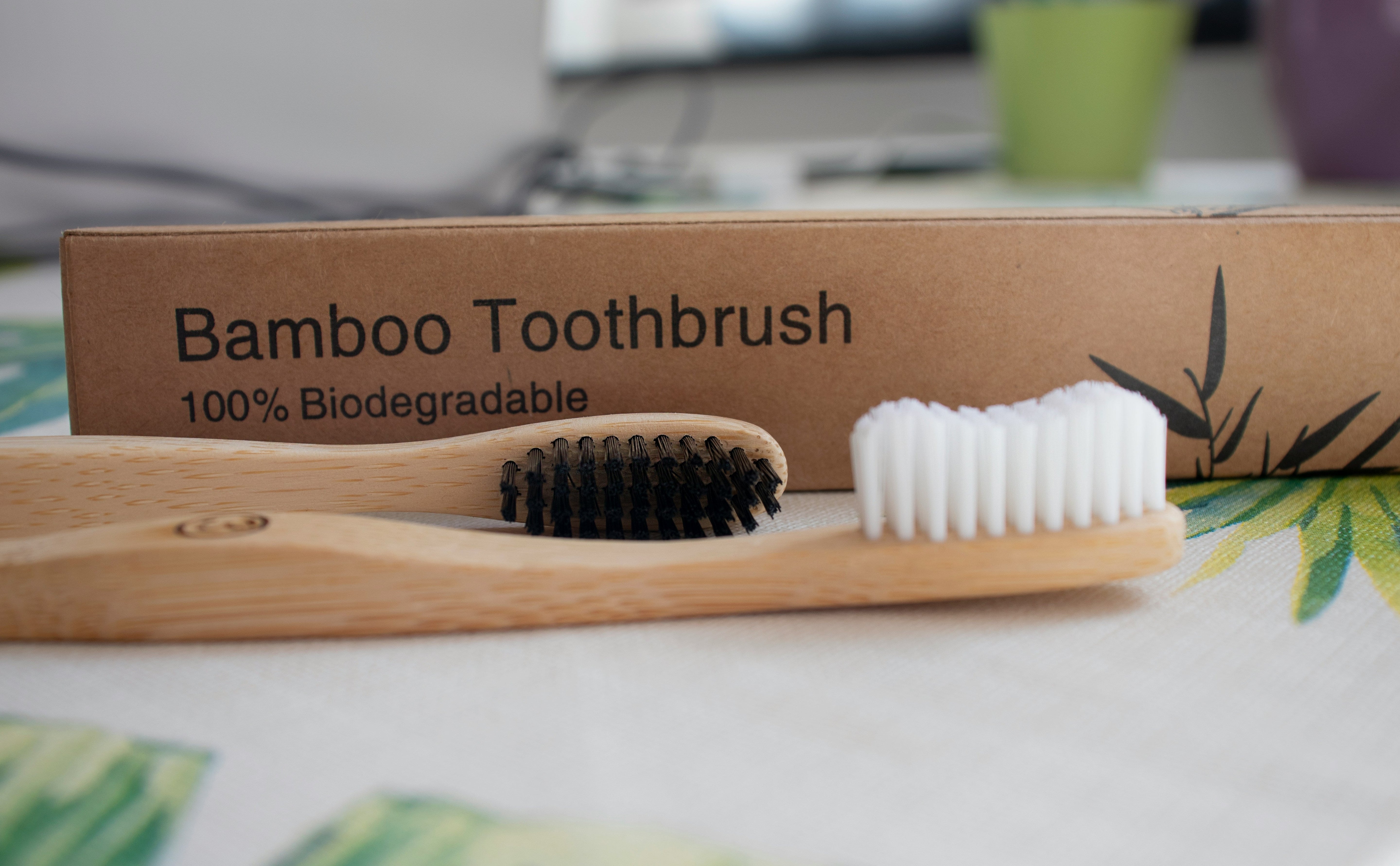We need to talk about bamboo.
It’s everywhere — from toothbrushes to straws to furniture — and it’s often marketed as the ultimate sustainable material. But when it comes to toothbrushes, bamboo isn’t the hero it’s made out to be. In fact, it’s one of the biggest examples of greenwashing in the oral-care industry.
Let’s unpack why.
1. Bamboo toothbrushes still end up in landfill
Most bamboo toothbrushes are made with plastic bristles. Those bristles can’t be separated or recycled, so when the brush gets tossed, it goes straight to landfill — where those “eco” bristles break down into microplastics that pollute our soil and waterways. Due to the tiny size of the bristles, they are very difficult to contain and are easily washed away with rainfall, escaping landfills.
And even if the handle is bamboo, it doesn’t just “return to the earth.” Bamboo only biodegrades under very specific conditions — warmth, moisture, oxygen, and microbial activity — none of which exist in modern landfills. So that bamboo handle you feel good about buying? It’s likely sitting buried under piles of garbage, not decomposing at all.
A bamboo toothbrush in a landfill is no more “natural” than a plastic one.
2. Growing bamboo isn’t impact-free
While bamboo grows quickly, it still takes land, water, and energy to cultivate and process. According to a life-cycle assessment (LCA) conducted by Trinity College Dublin in collaboration with the Eastman Dental Institute at University College London, bamboo toothbrushes actually ranked worse for the environment than some plastic alternatives when the full environmental footprint was considered — including land use, transport, and water consumption.
As lead researcher Dr. Brett Duane explained:
“Using them just stops land from being put to better use such as helping biodiversity, or in growing forests to offset carbon emissions.”
3. Electric toothbrushes are even worse
That same study found electric toothbrushes to be five times worse for the planet than disposable plastic ones. Between the batteries, wiring, and multi-component production, their footprint is enormous — and that’s before you even account for their short lifespan and non-recyclable parts.
Unless you have mobility issues or specific dental needs, there’s no proven health benefit that outweighs the environmental harm.
4. The surprising winner: recycled plastic in a closed loop
So what did the researchers find to be the most sustainable toothbrush?
Surprisingly, it wasn’t bamboo — or electric. The most sustainable option was a toothbrush that uses plastic recycled in a continuous process — meaning the materials are reused over and over rather than thrown away after one use.
That’s exactly the model Nada is built on.
Our closed-loop system uses a durable aluminum handle designed to last for decades and recyclable brush heads that can be sent back, reprocessed, and remade — again and again.
No landfill. No microplastics. No false “eco” claims.
5. True sustainability starts with design
And this is where most companies go wrong.
They focus on the end of a product’s life — recycling, composting, “eco” packaging — instead of the beginning. But real sustainability starts with designing products that never become waste in the first place.
At Nada, we take that responsibility seriously — building products that are circular by design, not just recyclable by marketing.
6. The bottom line
If you take one thing away from this, let it be this:
Sustainability does not start with recycling — it starts with responsibility.
Companies must take full ownership of their products’ entire life cycle. Anything less is just marketing.
At Nada, we’re committed to the kind of transparency and circular design that the planet actually needs.
Because the best toothbrush for the planet isn’t bamboo. It’s the one that was designed to last.




